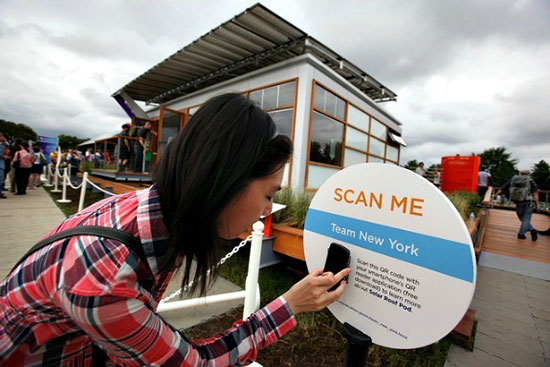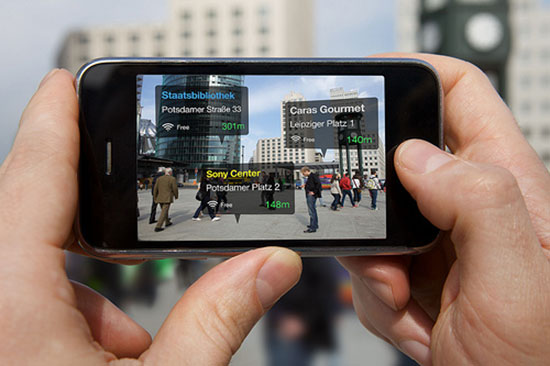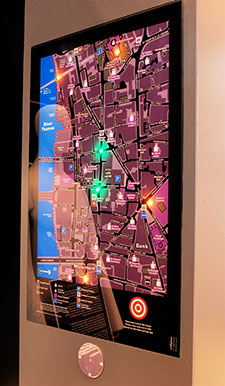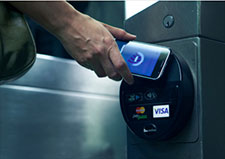We are living in the age of information; most of us would feel lost without our mobile access to the internet. The street furniture that surrounds us is also evolving in this, the information age, with the integration of intelligent systems and data access. We are a long way away from being overrun by self-aware robot bins but there are products in existence already that contain artificial intelligence.
The most commonly connected items are in fact our street lights. The recent push for energy efficiency has meant that the use of control and monitoring systems is more common. Using one of the many wireless systems, such as Telensa and LeafNut backed up by DMX or DALI controls, means that each light can be turned on/off and dimmed as part of the network. As these communications are two-way, the street lights will notify the central system of their current lamp condition, flagging up any failed lamps that need replacement.
Signage is the next most common product to utilise communications technology. After all, their purpose is to communicate positional information to the public in a low-tech way by the use of printed maps so it is natural that advanced technologies will increasingly be built-in to our wayfinding systems. 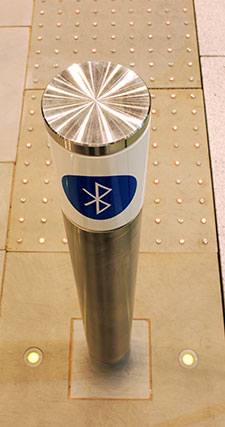
Older technologies such as Bluetooth have already been successfully integrated into signage. Users could receive messages and data from a sign via the use of an integrated Bluetooth module sending out the information. This could be phone number for a restaurant or the location of the car park you have just parked in.
Newer technologies such as QR codes have also been used to shift a low-tech to a high-tech solution. The data itself is static and requires no wiring or power supplies as it is just a 2D barcode printed onto the product. To use the data the user aims a smart phone camera at the image which is then decoded. The code can contain data such as website addresses, contact information and other low volume data.
Looking to the future, technologies such as Augmented Reality (AR), where smart phones and other devices can overlay information onto real time images taken from the environment, will start to become more commonplace. AR enabled signage could display videos, play sounds or give you directions to your destination. This becomes even more useful when you are travelling, on holiday or business, as AR can provide visual translations of the local signage so you don’t have to look like a lost tourist.
All of these newer technologies require one vital element, a robust, fast wireless data connection, and, as 4G networks roll out across the UK, the speed of access to data will continually improve. While some of the technologies such as QR codes and AR, do not necessarily require direct power and data, the decoding device (your phone) does. Considering that our urban environment is already full of street furniture, it makes good sense to re-purpose some of these items to also supply data and/or power to our mobile devices. In its simplest form this could mean fitting a charging port to a bench; allowing users to top-up their phone’s battery while they sit and read the latest news they just downloaded from the WiFi or 4G access point integrated into a nearby monolith sign.
This gives us a glimpse of the bus shelters of the future. A shelter could incorporate all of the above technologies and more. The lighting would be remotely controlled and monitored to track energy consumption with presence detection to adjust lighting levels down when there is no one waiting for the bus. When you enter the bus station, and approach the monolith sign at the entrance, you point your phone at the QR code under the printed map. An AR overlay map is loaded onto your phone to guide you to the stand you require, giving you real time bus information on which services are delayed and estimated time of arrivals, provided via the local WiFi system.
The monolith sign also features an NFC (Near Field Communication) payment system, so you pay for your bus ticket without requiring exact change. Once you reach your stand, you realise that all this data connectivity and interaction has drained your battery, and as you have been told that the next bus will be along in approximately 12 minutes, you place your phone on the Inductive Charging Mat built into the bench arms, or you use the IP rated USB socket placed under your seat to top up your battery, all while you update your social media status to ‘Waiting for the bus’.




